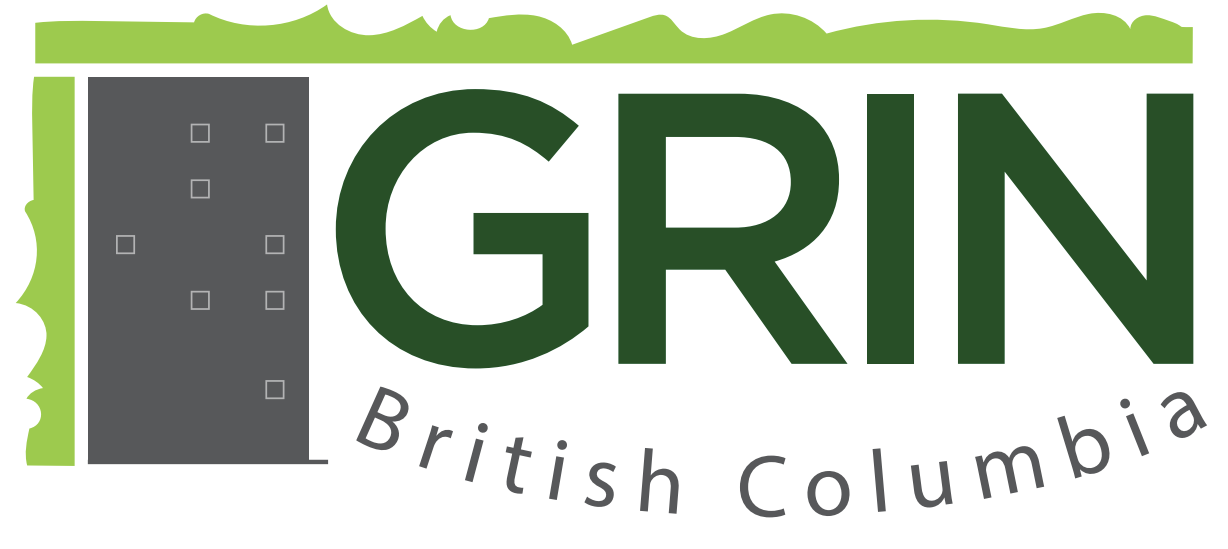
Greening BC Skylines Together...
Impervious surfaces in the built environment are the source of many environmental problems, and replacing them with plants and soil (i.e., green infrastructure) can reduce those impacts. Up to 70% of towns or cities may be impervious, of which roofs occupy 20-30% area. Taken together, green roofs and green infrastructure are economical tools for climate resilience, with both public and private benefits.
Their benefits include, but are not limited to:
clean and cool the air
create habitat for biodiversity
thermal insulation/ reduce greenhouse gas emissions
create green jobs
suppress fire and extinguish embers
extend the lifespan of waterproofing
reduce and delay stormwater runoff
restore the water cycle and prevent forest fires
provide opportunities for urban agriculture and human well-being
enhance solar power generation when combined with photovoltaic panels.
Below we provide some compelling results from the BCIT Green Roof Research Facility, which generated performance data from 2005-2008 at the Great Northern Way campus in Vancouver. Kudos to Dr. Maureen Connelly for spearheading this initiative, and to Dr. Karen Liu for instrumenting the dedicated facility! The Facility contrasted a conventional roof (2-ply SBS) with 3″ and 6″ green roofs.
In the dry season, green roofs in coastal BC reduce stormwater runoff by 90%. That means runoff is only produced by major rain events. During the wet season, this effect is reduced but still valuable reduction. These results were produced by the BCIT Green Roof Research Facility.

Stormwater runoff is a toxic cocktail of waste, petrochemicals and toxins, which flows into drains and eventually into surface waters. As well, like many cities with old sewer systems, small rain events in Vancouver often lead to combined sewer overflows (CSO). Many cities with combined sewer systems incentivise green roofs and other forms of infrastructure as an economic means of protecting surface waters, human and ecosystem health, and salmon habitat.

Green roofs insulate buildings, meaning they reduce air conditioning usage in the summer and the waste heat generated. The BCIT results show how two green roofs (green = 3″; blue = 6″) performed over 4 seasons in coastal BC. Heat flow goes in both directions (e.g., heat gained in summer; or lost in winter). In the figure below, heat flux through conventional roofs (red) corresponds closely with outdoor temperatures. By contrast, green roofs are consistent and significantly reduce total daily average heat flow.

It’s important to note that disruptions to the electrical grid concurrent with an extreme heat event can be a fatal combination.
Being exposed to the sun and elements, the waterproofing of conventional roofs experience quite extreme temperature fluctuations, every day (see red bars below). On top of that, exposed membranes are exposed to UV rays, which expedites the degradation of the waterproof membrane. Hence conventional roofs have an average lifespan of 10-20 years, after which time they must be replaced.

As shown by the green (3″) and blue (6″) bars above, green roofs significantly reduce temperature fluctuations of the membrane they protect. This longevity means major cost savings and waste prevention. The US General Services Administration (2011) reported that membrane durability under green roofs exceeds 50 years. Swiss observations suggest over 100 years! General consensus agrees that green roofs extend the lifespan of waterproofing by 2 or 3 times.
The table below compares membrane longevity for vegetated versus conventional roofs, as calculated by different institutes. The conventional roofs in this case were polymer-modified bituminous sheet membranes, which are black.

